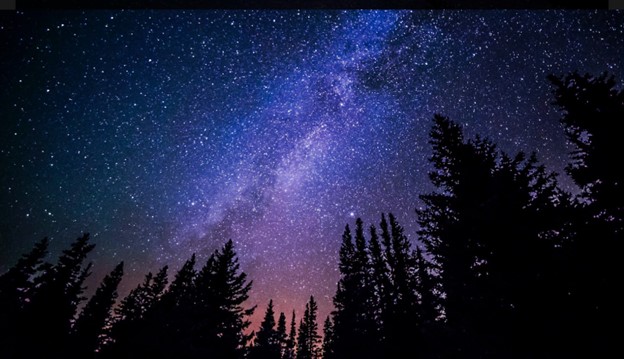Picture you are walking outside at night. You could be at the beach, woods, whatever. You notice that there isn’t a cloud in the sky; the stars are visible, and the moon is illuminated in the night sky. You go in for a picture, but after taking the images, you notice that no matter how you focus, your beautiful star night looks more like splattered paint…
Welcome to a journey through the stars and galaxies, where we embark on ‘Capturing the Cosmos: A Crash Course of Astrophotography. Join me as we navigate the fascinating world of celestial imaging and learn the secrets of capturing the beauty of the cosmos through your phone lens.
What is Astrophotography?
Astrophotography is a specialized type of photography that involves capturing images of astronomical objects and celestial phenomena such as stars, planets, galaxies, and nebulae. It often requires long exposure times and specialized equipment to capture the beauty of the night sky.
How can I take images like these with my Phone?
To be clear, we won’t be covering how to take photos of distant galaxies with our iPhones and Androids. But here are eight ways to capture astrophotography images with your phone.
Find a Dark Location:
Choose a location with minimal light pollution, ideally away from city lights, to capture clear night sky images.
Use a Tripod:
To avoid shaky images, use a tripod or some stable surface to keep your phone steady during the long exposure.
Camera App:
Most modern smartphones have manual camera modes or third-party camera apps that allow you to adjust settings. Use these modes to control exposure, focus, and ISO.
Focus on Infinity:
Set the focus of your phone to infinity. This focus is crucial for capturing sharp stars. Some phones have manual focus options in their camera apps.
Lower the ISO:
Lower the ISO setting to reduce noise in the image. Keep it as low as possible to capture clean shots of the night sky.
Shoot in RAW (if possible):
If your phone supports it, shoot in RAW mode for better post-processing flexibility. “A RAW image, or a RAW photo, is a file that contains the ‘raw’ or unprocessed data from the camera’s image sensor during exposure.”
Edit Your Photos:
After capturing your photos, use photo editing apps or software to enhance and process your astrophotography images. Adjust the brightness of your photo, contrast, and remove noise.
Practice and Experiment:
Astrophotography with a phone can be challenging, so do not be discouraged if your first attempts aren’t perfect. Experiment with different settings and learn from each experience.
In our phones, the quality of astrophotography with smartphones may differ from DSLR cameras or dedicated astrophotography equipment due to the smaller sensors and limited manual controls. However, it’s a great way to get started and capture simplistic night sky scenes.
For more detailed guidance and tips, you can refer to websites and sources like:
- Photography Life (photographylife.com): Check their mobile photography section for tips on smartphone astrophotography.
- Photography Stack Exchange (photo.stackexchange.com): This forum often has discussions and tips about smartphone astrophotography.
Also, you can consult your specific phone’s manual, or if you’ve “lost” your phone’s manual, check your phone manufacturer’s website for information on your device’s camera capabilities and settings.
Where Can I Find More About Astrophotography?
Here are some online sources where you can learn more about astrophotography:
Sky & Telescope (skyandtelescope.org): This website offers a wealth of information on astrophotography, including tutorials, equipment guides, and galleries of stunning images of astrophotography.
AstroBackyard (astrobackyard.com): Trevor Jones, the creator of AstroBackyard, provides detailed guides and tutorials on astrophotography, equipment reviews, and practical tips.
Lonely Speck (lonelyspeck.com): This site is known for its in-depth guides on astrophotography, including star stacking and post-processing techniques. It’s a valuable resource for both beginners and advanced astrophotographers.
Cloudy Nights (cloudynights.com): Cloudy Nights is a community forum where astrophotographers share their experiences, images, and advice. It’s a great place to connect with other astrophotography enthusiasts.
YouTube (youtube.com): Many astrophotographers and organizations share video tutorials and guides on platforms like YouTube. Channels like “AstroBackyard,” “AstroShake,” and “AstroRath” offer a wide range of instructional videos.
Sadly, our crash course session is coming to a close. The Talon hopes we’ve provided you with helpful resources to help as you begin your intergalactic journey. 
Sources:
Babiedaite, A. (n.d.). What is a RAW Image Format? Capture One. Retrieved November 6, 2023, from https://www.captureone.com/en/explore-features/raw-photo-editing/what-is-raw
Hutton, R. (2015). Trees against purple night sky. photograph. https://unsplash.com/photos/worms-eye-view-of-trees-during-night-time-Jztmx9yqjBw


